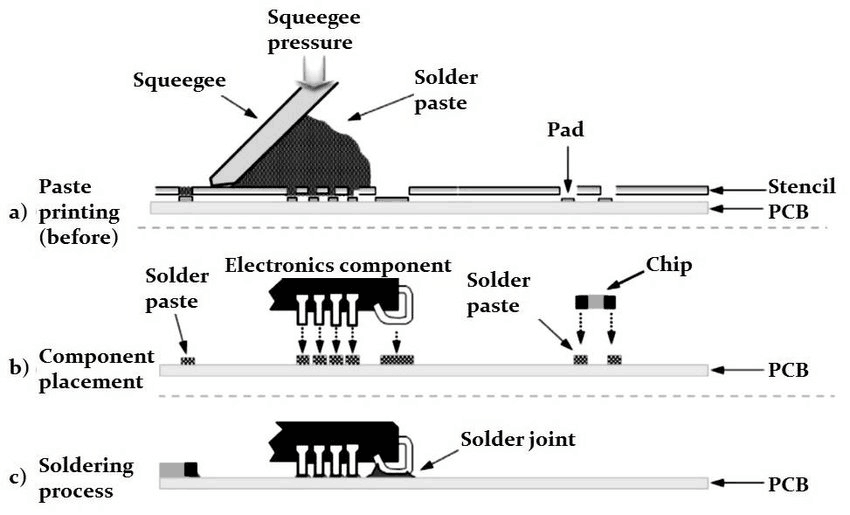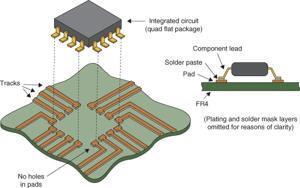Content Menu
● Introduction to Surface Mount Technology (SMT)
>> History of SMT
● Advantages of Surface Mount Technology
● The SMT Process
● Applications of Surface Mount Technology
● Challenges Facing Surface Mount Technology
● Future Trends in Surface Mount Technology
● Conclusion
>> Frequently Asked Questions
Introduction to Surface Mount Technology (SMT)
Surface Mount Technology (SMT) is a revolutionary method in electronics manufacturing that allows components to be mounted directly onto the surface of printed circuit boards (PCBs). This contrasts with traditional through-hole technology, where components are inserted into holes drilled into the PCB. The evolution of SMT has significantly transformed the landscape of electronic assembly, enabling more compact designs and efficient production processes.
History of SMT
The origins of SMT can be traced back to the 1960s when IBM developed the concept for small-scale computers. However, it wasn't until the 1980s that SMT gained traction in the industry, eventually becoming the preferred method for assembling high-tech electronic devices. The rise of SMT was driven by its ability to facilitate automation in manufacturing, reducing labor costs and increasing production speed.
Advantages of Surface Mount Technology
SMT offers numerous benefits that have made it indispensable in modern electronics manufacturing:
1. Compact Design: SMT components are significantly smaller than their through-hole counterparts, allowing for denser circuit layouts. This miniaturization is essential for devices like smartphones and wearable technology, where space is at a premium.
2. Higher Component Density: Because SMT allows components to be placed on both sides of a PCB, manufacturers can achieve higher component density. This capability leads to more functionality within a given area, making it ideal for complex electronic devices.
3. Improved Manufacturing Efficiency: The automated processes associated with SMT reduce assembly time and minimize human error. This efficiency translates to lower production costs and faster time-to-market for new products.
4. Enhanced Performance: SMT components typically have shorter leads, which reduces inductance and capacitance, thereby improving performance in high-frequency applications. This feature is particularly beneficial for modern electronics that operate at higher speeds.
5. Flexibility in Design: SMT supports intricate PCB layouts, allowing engineers to create more complex designs that were previously difficult or impossible with through-hole technology.

The SMT Process
The SMT process involves several key steps:
1. Solder Paste Application: Solder paste is applied to the PCB using a stencil or screen printing method.
2. Component Placement: Automated pick-and-place machines position the SMT components onto the solder paste on the PCB.
3. Reflow Soldering: The assembled PCBs undergo reflow soldering, where they are heated in an oven to melt the solder paste, creating electrical connections between the components and the PCB.
4. Inspection and Testing: After soldering, PCBs are inspected for defects using automated optical inspection (AOI) systems and tested for functionality.
5. Final Assembly: Once tested, the PCBs are integrated into final products.
Applications of Surface Mount Technology
SMT is widely used across various industries due to its versatility and efficiency:
- Consumer Electronics: Smartphones, tablets, and laptops utilize SMT for compact design and high performance.
- Medical Devices: Many medical instruments rely on SMT for their small size and reliability.
- Automotive Electronics: Modern vehicles incorporate numerous electronic systems that benefit from SMT's space-saving capabilities.
- Telecommunications: High-frequency circuits in telecommunications equipment often employ SMT for optimal performance.

Challenges Facing Surface Mount Technology
Despite its advantages, SMT also faces challenges:
1. Complexity of Assembly: While automation has streamlined many processes, designing PCBs for SMT can be complex due to the need for precise alignment and soldering.
2. Thermal Management: As devices become smaller and more powerful, managing heat dissipation becomes critical. Engineers must consider thermal design early in the development process.
3. Component Availability: As technology evolves rapidly, ensuring a steady supply of compatible SMT components can be challenging.
4. Repairability: Devices built with SMT can be harder to repair due to their compact nature and the difficulty in accessing individual components.
Future Trends in Surface Mount Technology
The future of SMT looks promising as technology continues to advance:
1. Miniaturization Trends: Continued demand for smaller devices will drive innovations in component design and assembly techniques.
2. Automation Enhancements: Improvements in robotics and AI will further automate the assembly process, increasing efficiency and reducing costs.
3. Advanced Materials: New materials will enhance performance characteristics such as thermal conductivity and electrical efficiency.
4. Sustainability Practices: As environmental concerns grow, manufacturers will focus on sustainable practices within SMT processes, including recycling materials and reducing waste.

Conclusion
Surface Mount Technology has fundamentally changed how electronic devices are manufactured, enabling greater efficiency, compactness, and performance. As industries continue to innovate, SMT will remain at the forefront of electronics manufacturing solutions.
Frequently Asked Questions
1. What is Surface Mount Technology?
- Surface Mount Technology (SMT) is a method of mounting electronic components directly onto the surface of PCBs without drilling holes.
2. What are the advantages of using SMT?
- Advantages include reduced size and weight of components, higher component density, improved manufacturing efficiency, enhanced performance in high-frequency applications, and flexibility in design.
3. What industries commonly use SMT?
- Common industries include consumer electronics, medical devices, automotive electronics, and telecommunications.
4. What challenges does SMT face?
- Challenges include assembly complexity, thermal management issues, component availability concerns, and repairability difficulties.
5. What does the future hold for Surface Mount Technology?
- Future trends include continued miniaturization, enhanced automation through AI and robotics, advanced materials development, and sustainable manufacturing practices.
The total word count for this article is 1,042 words (excluding FAQs).
Citations:
[1] https://www.surfacemountprocess.com
[2] https://jlcpcb.com/blog/the-characteristics-of-surface-mount-technology
[3] https://www.gssmt-parts.com/aboutus.html
[4] https://www.wevolver.com/article/smt-process
[5] https://www.mpe-electronics.co.uk/guides/what-is-surface-mount-technology
[6] https://gs-smt.en.made-in-china.com
[7] https://www.ablcircuits.co.uk/blog/what-is-the-smt-process-and-why-should-oems-care/
[8] https://smtnet.com/company/index.cfm?fuseaction=browse_companies&country=45
[9] https://hilelectronic.com/surface-mount-technology/
[10] https://www.theengineeringprojects.com/2022/02/introduction-to-surface-mount-technology.html
[11] https://www.geeksforgeeks.org/surface-mount-technology/




















